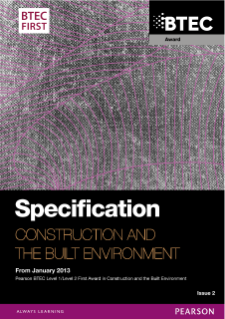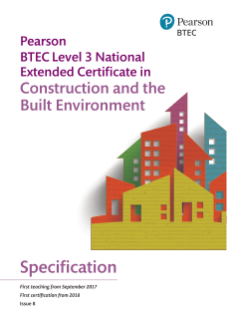Construction, Planning and the Built Environment
January 2026 Construction Update
BTEC National (AAQ) in Construction - Teaching, learning and assessment materials
Construction sector update August 2025
Edexcel Online and Multi Factor Authentication (MFA)
January 2026 Construction Update
BTEC National (AAQ) in Construction - Teaching, learning and assessment materials
BTEC National (AAQ) in Construction - Teaching, learning and assessment materials
A dedicated support page for the new BTEC Nationals in Construction and the Built Environment (AAQ), with essential guidance, downloadable templates, training links, and materials to support qualification delivery.
Construction sector update August 2025
Edexcel Online and Multi Factor Authentication (MFA)
January 2026 Construction Update
BTEC National (AAQ) in Construction - Teaching, learning and assessment materials
Construction sector update August 2025
Construction sector update August 2025
Wider sector update including qualification dates
Edexcel Online and Multi Factor Authentication (MFA)
January 2026 Construction Update
BTEC National (AAQ) in Construction - Teaching, learning and assessment materials
Construction sector update August 2025
Edexcel Online and Multi Factor Authentication (MFA)
Subject advisor
Evren Alibaba
Construction, Planning and the Built Environment

Introducing Evren Alibaba, our Subject Advisor for Construction, Design and Technology, and Engineering

His role is to support you with the delivery of our qualifications, to help you understand the content and the assessment requirements and to answer any subject-specific queries you may have.
Popular topics
As the demand rises for environmentally friendly construction techniques and sustainable practices, individuals with new skills will be required to build the houses of the future. For learners interested in home design, architecture, and the future of the house building industry, centres can create a bespoke course consisting of existing core units from our BTEC Nationals in Construction and the Built Environment (2017), alongside specialist units designed in association with MOBIE.
New units
Housing Design Project:
Learners develop skills in responding to a client brief with a housing design proposal and solution.
Offsite and Onsite Alternative Construction Methods:
In order to meet wider changes in the construction industry, learners develop skills in selecting alternative construction methods.
Renewable Energy for Housing:
Learners develop plans for improving the sustainability of homes through renewable energy use, developing a plan to install a renewable system into a domestic property.
The Housing Industry:
Learners will better understand the industry – assessing the drivers that influence the housing market in terms of development, delivery and procurement.
Access BTEC Nationals in Construction and the Built Environment
The student book for the new BTEC Nationals in Construction (RQF) is available from the publishing site. The book includes the following units:
Contents Listing
Unit 1: Construction Principles
Unit 2: Construction Design
Unit 3: Tendering and Estimating
Unit 4: Construction Technology
Unit 5: Health and Safety in Construction
Unit 6: Surveying in Construction
Unit 7: Graphical Detailing in Construction
Unit 8: Building Regulations and Control in Construction
Unit 9: Management of a Construction Project
Unit 10: Building Surveying in Construction
Unit 13: Measurement Techniques in Construction
There are also activebook subscriptions available from the same page.
Access the student book and activebook for BTEC Nationals in Engineering
We have recently heard back from the Department for Education (DfE) in relation to the 2020 lists. BTEC First Award in Construction and the Built Environment is on the list.
We have made some changes to the qualification and the new specification can be accessed from the qualification page.
Access the new BTEC First Award in Construction specification
The changes are listed under the section 'Summary of Pearson BTEC Level 1/Level 2 First Award in Construction and the Built Environment'. This is in the initial pages of the specification.
To obtain a CSCS green card it is a mandatory requirement to study the following qualification.
To find out where you can study this qualification, click on the link below for the specification page and find where can I study this qualification? under the Learning tab.
BTEC Level 1 Award in Health and Safety in a Construction Environment
In addition to this, you also need to pass the CITB Operatives Health, Safety and Environment test within two years of applying for a new card.
For more information visit the CSCS website.
Useful documents



Find and book events
Find all the latest training and feedback events for Construction, Planning and the Built Environment.
